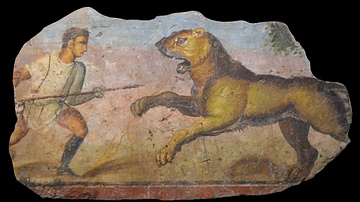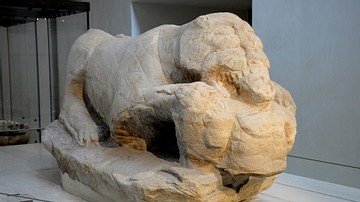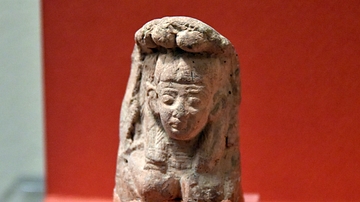Illustration
This figurine is a combination of the Syrian goddess Astarte with the Egyptian Hathor-Sekhmet. The head is formed so that the front shows the face of a woman while the side view is the profile of a lioness. The goddesses were associated with the lioness in the Levantine and Egyptian mythologies. Iron Age II, 10th to 9th century BCE. From Tell Zar'a in northwestern Jordan. (The Jordan Museum, Amman, Jordan).
About the Author
Cite This Work
APA Style
Amin, O. S. M. (2019, February 19). The Lioness Woman from Tell Zar'a. World History Encyclopedia. Retrieved from https://www.worldhistory.org/image/10087/the-lioness-woman-from-tell-zara/
Chicago Style
Amin, Osama Shukir Muhammed. "The Lioness Woman from Tell Zar'a." World History Encyclopedia. Last modified February 19, 2019. https://www.worldhistory.org/image/10087/the-lioness-woman-from-tell-zara/.
MLA Style
Amin, Osama Shukir Muhammed. "The Lioness Woman from Tell Zar'a." World History Encyclopedia. World History Encyclopedia, 19 Feb 2019, https://www.worldhistory.org/image/10087/the-lioness-woman-from-tell-zara/. Web. 17 Apr 2025.








